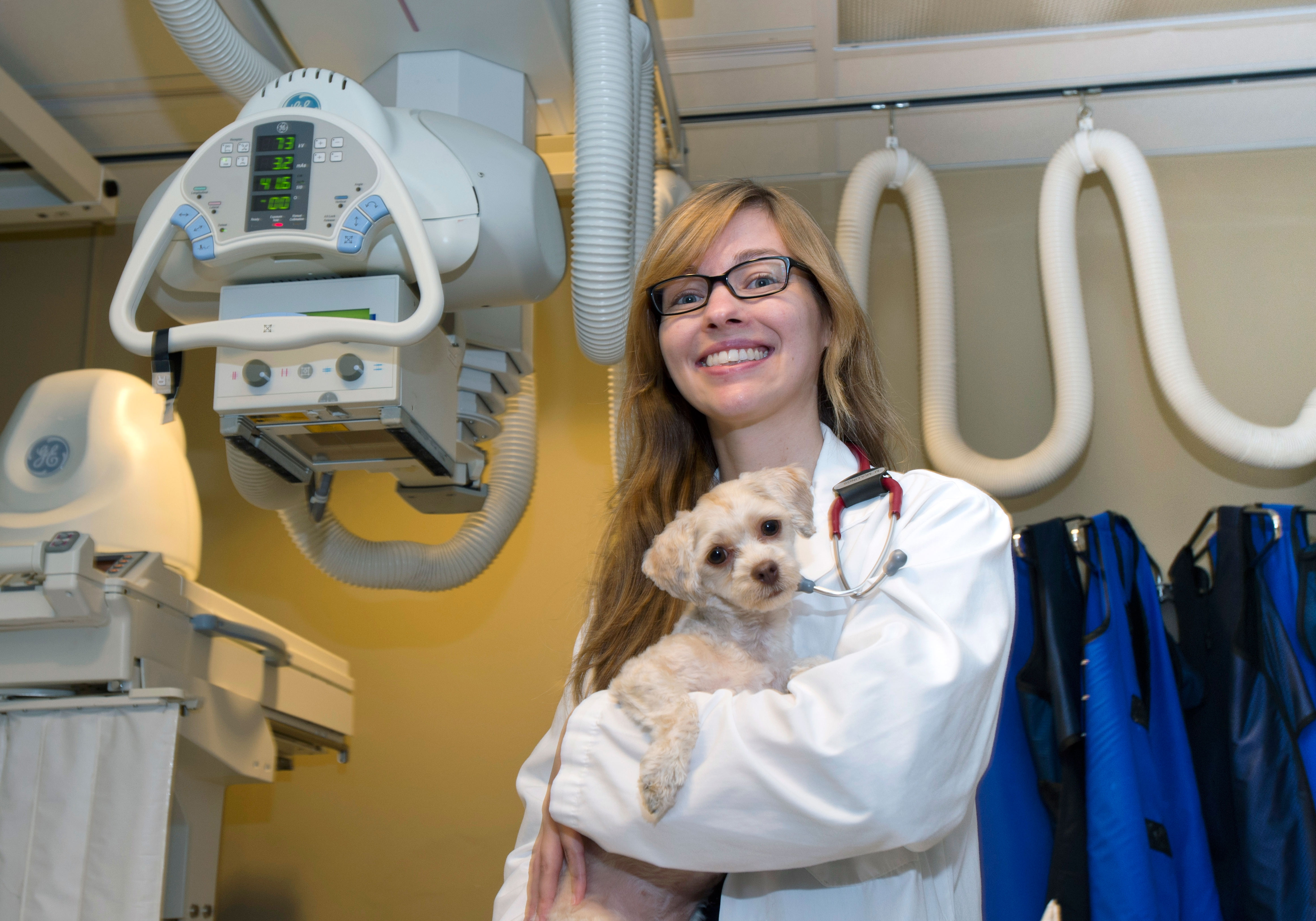Prof. Michelle Oblak, Department of Clinical Studies, with Ella, who is thriving one year after her surgery.
An innovative approach and first-time ingenuity proved to be a perfect solution for a young dog needing surgery at the Ontario Veterinary College (OVC).
Ella, a shih tzu-poodle cross, was only 18 months old when she arrived at the OVC Mona Campbell Centre for Animal Cancer at the University of Guelph for her first appointment. A lump on her head that had been slowly growing over the first few months of her life began increasing in size quickly and was becoming a concern.
After an initial visit, blood work and a biopsy, clinical studies professor and veterinary surgical oncologist, Michelle Oblak, knew they were dealing with a bony tumour. While the tumour was suspected to be benign, it was invading Ella’s skull and as it continued growing it was pressing on her brain. Osteomas are uncommon and not breed specific. These benign tumours typically grow in flat bones and affect young animals. They can be aggressive locally but with removal can often be cured. The aim during these types of surgeries is to take extra margins when removing a tumour to get as many of the cells as possible, but this varies with each situation, Oblak says.
Fortunately, if this tumour could be removed completely, Ella had the potential for a very good outcome. One of the challenges was its size — removing the tumour would result in a very large defect in Ella’s skull.
Oblak wanted to find a solution to protect Ella’s skull and ensure a normal life. “Ella is a young dog and has her whole life ahead of her,” she says. “Usually we try to save some muscle during surgery to provide support to the area where we’ve had to remove bone, but in Ella’s case this muscle was stretched thin so that wasn’t possible.”
“My concern was her quality of life,” says Olivia Riggin, Ella’s owner. “Would I be able to provide the care she needs? What if she hits her head after surgery?”
After consulting with veterinary surgical oncologists throughout North America, Oblak suggested titanium mesh as an option to protect the opening. The mesh is delicate and can be molded to the shape of the skull. Titanium mesh is used in human surgery for reconstruction, but is not well reported in dogs.
“As far as I know, this is the first time this technique has been attempted in Canada,” says Oblak.
In Ella’s case, Oblak needed to rely on her extensive experience with similar tumours and CT imaging to determine the best approach when removing the growth. Oblak used CT imaging to plan the surgery steps, and then cut and molded the titanium mesh to Ella during the surgery.
“The titanium mesh gives me piece of mind — she’s not flying solo,” says Riggin.
When Ella arrived home she needed a lot of rest, but she was soon back to her normal self, spunky and sassy, says Riggin. She was also back to her regular hijinks with her buddy, Jack, a Maltese Yorkie who is now particularly protective.
One year post surgery Ella continues to thrive.
“My goal with all surgeries is that at the end of the day, the patient can have a good quality of life and behave as a normal dog,” says Oblak. “In Ella’s case, the use of the titanium mesh seemed to be the best way to offer her the most normal and active life possible, hopefully for a very long time”
